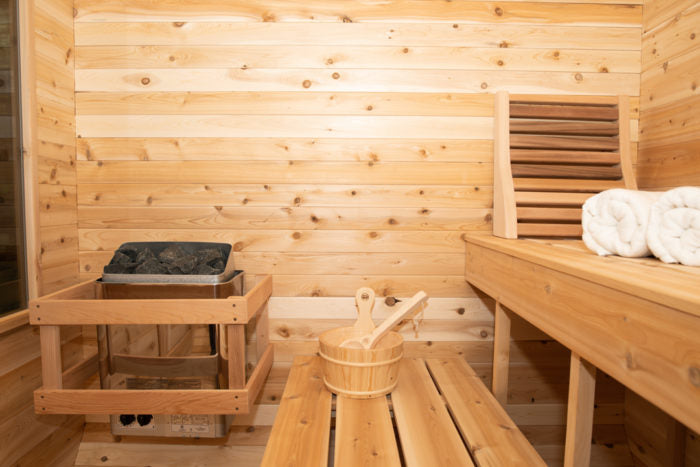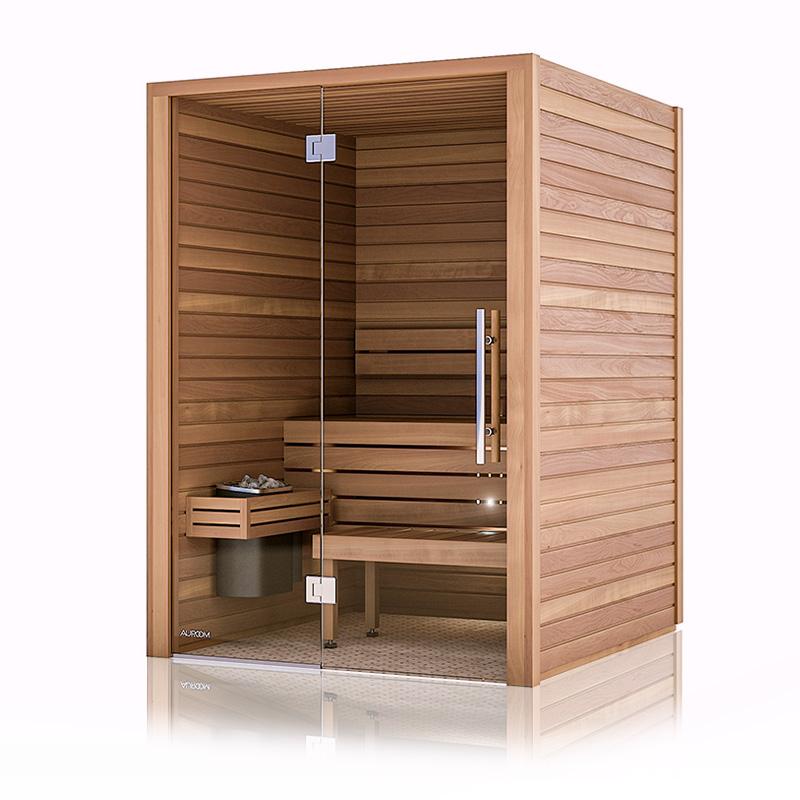The Main Principles Of Traditional Sauna
Wiki Article
An Unbiased View of Traditional Sauna
Table of ContentsHow Traditional Sauna can Save You Time, Stress, and Money.5 Easy Facts About Traditional Sauna DescribedTraditional Sauna Fundamentals ExplainedThe Of Traditional Sauna
A lot of the weight shed in a sauna is water loss and is re-gained upon rehydrating. Nevertheless, certainly sauna can be a fundamental part of a healthy and balanced fat burning program. To check out the differences between traditional and IR saunas, I will certainly divide these into verifiable, academic, and fabricated differences.Thus, the best point in the saunawhich is at the ceiling straight over the sauna heateris typically in between 185 and 190 F. Traditional Sauna. Claims that a traditional sauna goes beyond 200 F is just not true and not relevant for electric saunas sold in the United States. The temperature for a far-infrared sauna is typically set in between 120 and 140 F; nonetheless, unlike the traditional sauna, the objective in and IR room is not to accomplish a high temperature level
Due to this, the temperature level distinction is almost pointless, because profuse sweating results in both sauna types, yet the technique of warming the body is various. In an IR sauna the bather will really feel warm and will certainly sweat a lot, however at a lot lower temperatures. Therefore, if the goal is to invest longer periods of time in the sauna, the IR sauna is a good option.

A Biased View of Traditional Sauna
When the high temperature is achieved, the components cycle on and off to keep the high temperature. The majority of standard sauna individuals appreciate putting water over the rocks to develop heavy steam to increase sauna humidity levels. The advantages of putting water over the rocks include: making the area more comfortable, dampening the nasal passages, and enabling the use of aromatherapy by mixing crucial oils with the water.In a far-infrared sauna, the warm front pass through the body to efficiently warm the body and elevate the body core temperature level. To achieve this boosted temperature, Far-infrared emitters create infrared power which is close to the exact same wavelength as that which the body naturally emitsoften referred to as the "Important Array" of 7 to 14 microns), so the power is well received by the body.
When the power goes into the body, it triggers the body temperature to raise and inevitably results in sweating. In an infrared sauna it is necessary for the emitters/heaters to continue to be on practically regularly. Given that there is no mass of rocks to keep warmth, the sauna will cool down if the emitters shut down.
As discussed over, the sauna bather in an infrared room desires to place himself in see here front of running emitters to get maximum take advantage of the heat. The home heating time for the 2 rooms can be extremely different, relying on exactly how the areas are made use of. For a traditional sauna, a bather should permit 30-40 mins for the room to achieve a preferred temperature and to correctly pre-heat the rocks.
The 2-Minute Rule for Traditional Sauna
A well constructed sauna will commonly achieve a temperature level of 150-160 F in concerning 30-40 minutes. For hotter temperatures, the room might need to warm for a longer duration.To some, 15 mins was "squandered" while the infrared power warmed the timber panels as opposed to warming a body, while others discover a pre-heated room to be a lot more comfy and believe an elevated starting temperature level is necessary to begin sweating. The size of recommended use for each and every space is around the same (10-15 minutes per session); nonetheless, as a result of the lower air temperatures additional hints and the capacity to feel the impacts of infrared warm faster than a standard sauna, it is not uncommon for an individual to invest an overall of 20-30 minutes in an infrared sauna.
Traditional saunas tend to be larger (thus make use of even more electricity) than infrared saunas, although standard saunas are definitely available in one and 2 individual dimensions too. For a two-person conventional sauna, 5x6 or 5x7 size is most popular. The leading bench can conveniently seat 2 or three people and is also enough time to lie down during the sauna session.


The ordinary expense per kWH of electrical energy in the U.S. is roughly $0.11, so a 4.5 kW heating unit will certainly cost about $.50 to compete one hour, if check over here the heating system runs continuously for one hour. Usually a sauna heater will certainly compete 75% of the initial hour and 50% of subsequent hours on given that the aspects cycle once the set temperature level is accomplished.
Excitement About Traditional Sauna
A 2 person far-infrared area is typically physically smaller sized than a typical sauna, often about 4' x 4' or smaller. The IR heater is usually 1.5-1.7 kW utilizing a 120 volt 15 amp plug-in solution. Considering that the room can be utilized sooner than a sauna area, we will certainly assume the room is utilized for to of an hour including warm up time.There is a rarely discussed difference in the social experience in between the two rooms. While our culture has actually shed several of the social advantage of the traditional sauna experience, it can be really socially gratifying. From family members time in the sauna, to heart-felt conversations with substantial others, to sauna partiesthe standard sauna experience can result in intimate socializing.
Most higher end infrared spaces consist of tinted light therapy, stereo and full-glass fronts. The dimension of a lot of rooms enable 2 people to easily use the room, while some designs might permit for a third or 4th individual to utilize the room. Custom-made infrared rooms are additionally readily available, with area dimensions offered as much as 7' x 8' x 7' high.
Report this wiki page